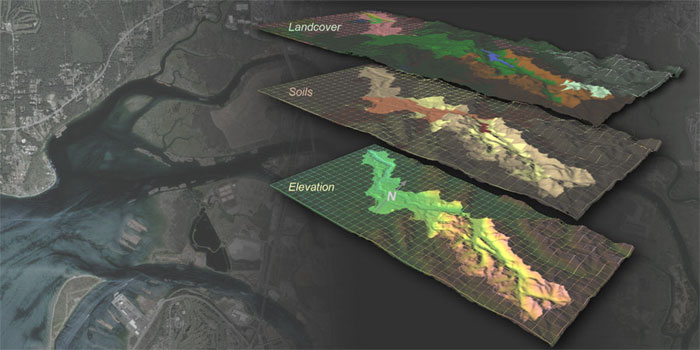Future Change Impacts

Effects of Projected Future Climate and Land Cover Conditions in Mid 21st Century on Streamflow in the Puget Sound basin.
PRISM, in partnership with the UW Climate Impacts Group (CIG) is conducting a series of studies investigating the interplay of changing landscapes and climate on the distribution of water (the "hydrology") across the Puget Sound. This work is based on the application of DHSVM (Distributed Hydrology Soil Vegetation Model), a so-called geospatially-explicit, process based model. This work follows on from the initial "Hydromet" work that was the first-generation climate/DHSVM application of PRISM. DHSVM was developed originally for application to forested mountain watersheds. In this third study of the series, DHSVM is beint used to evaluate the potential consequences of landuse and climate change by the middle of the 21st century. (Cuo et al in preparation). This work is still in progress.
Briefl, DHSVM was used to study the potential impacts of projected future land cover and climate change on the hydrology of the Puget Sound basin, Washington in the mid-21st century. Projected climate conditions for the mid-21st Century were represented using statistically downscaled climate ensembles from the 2007 Intergovernmental Panel on Climate Change (IPCC) 2007 study, while 2050 land cover was projected from a previous forecast of 2027 land cover (Fig. 1). In general, the climate change signal on hydrology, which was evidenced primarily through changes in timing of winter and spring runoff, exceeded that of land cover in upland basins which are snow-rain mixed or snow dominated in the current climate (Fig. 2). In contrast, projected changes in land cover (Fig.3) were generally more important than climate change in those lowland basins where the projected land cover change from non-urban and partially urban to urban was substantial. Projected land cover change in the urbanizing portions of the Puget Sound lowlands generally lead to higher runoff in fall, winter and spring, and reduced evapotranspiration as a result of the combined effects of increased impervious area and reduced vegetative cover (Fig. 4).
(Cuo, L., Beyene T., Voisin N., Su F., D.P. Lettenmaier, Alberti M., J.E. Richey, Mid-21st Century Climate and Land Cover Change Effects on Hydrology in the Puget Sound Basin. in prep.